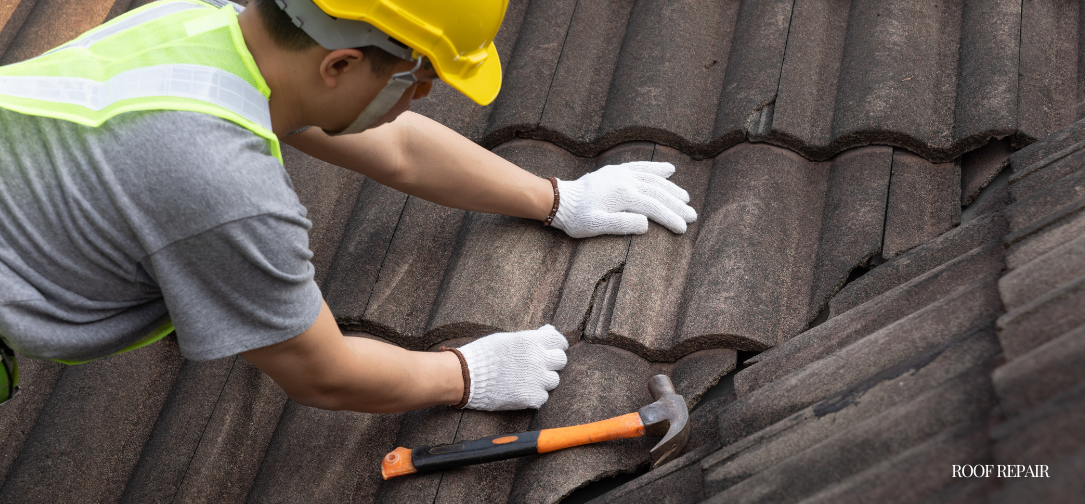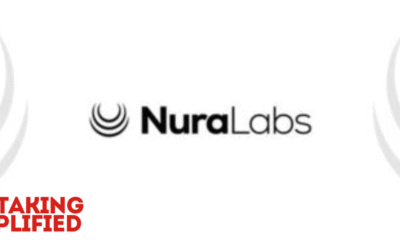Alternative Energy
Roof Repair: A Comprehensive Guide to Protecting Your Home from Top to Bottom

When it comes to home maintenance, the roof is often an overlooked hero. It sits above us, largely out of sight, and consequently, out of mind—until something goes wrong. A leaky roof can quickly lead to water damage, mold growth, and structural issues, turning a small problem into a costly nightmare. In the United States, where weather conditions can vary drastically from region to region, maintaining and repairing your roof is crucial to preserving the integrity of your home. This article provides an in-depth exploration of roof repair, from recognizing the signs of damage to understanding the repair process and knowing when it’s time to call in the professionals.
Understanding the Importance of Roof Maintenance
The roof is your home’s first line of defense against the elements. Whether it’s the blazing sun, heavy rain, strong winds, or snowstorms, your roof takes the brunt of Mother Nature’s fury. Over time, this exposure can lead to wear and tear that, if not addressed, can compromise the roof’s integrity.
Why Regular Roof Maintenance is Crucial
- Prevents Water Damage: Even a small leak can cause significant water damage over time. Water can seep into the attic, walls, and even the foundation, leading to mold growth and structural damage.
- Extends Roof Lifespan: Regular maintenance can help extend the life of your roof, postponing the need for a costly replacement.
- Energy Efficiency: A well-maintained roof provides better insulation, keeping your home warmer in the winter and cooler in the summer, which can reduce energy bills.
- Increases Property Value: A home with a sturdy, well-maintained roof is more attractive to potential buyers, potentially increasing your property’s value.
Common Types of Roof Damage
Before diving into repair methods, it’s essential to understand the common types of roof damage. Recognizing these can help you address issues before they escalate.
1. Shingle Damage
- Cracked or Missing Shingles: Over time, shingles can crack, curl, or fall off due to exposure to the sun, wind, and rain.
- Granule Loss: Asphalt shingles lose granules as they age, which can lead to thinning and exposure of the underlying layers.
2. Leaks and Water Damage
- Flashing Issues: Flashing is used around chimneys, vents, and skylights to prevent water from seeping in. If it becomes damaged or improperly sealed, leaks can occur.
- Ice Dams: In colder climates, ice dams can form on the roof edge, preventing melting snow from draining and causing water to back up and leak into the home.
3. Structural Damage
- Sagging Roof: A sagging roof may indicate structural issues, such as problems with the rafters or sheathing.
- Rotting Wood: Wood elements of the roof, such as the decking or fascia, can rot if they’re consistently exposed to moisture.
4. Storm Damage
- Wind Damage: High winds can lift or tear off shingles, exposing the roof to further damage.
- Hail Damage: Hail can cause dents or punctures in shingles, especially in older roofs.
5. Gutter Issues
- Clogged Gutters: If gutters are clogged, water can overflow and cause damage to the roof edge, fascia, and foundation.
- Detached Gutters: Gutters that are pulling away from the roof can indicate water damage to the fascia or eaves.
Assessing Roof Damage: When to Repair and When to Replace
Determining whether your roof needs repair or replacement can be challenging. Minor damage might only require a simple repair, but more extensive damage could necessitate a full roof replacement.
1. The Age of Your Roof
- Typical Lifespan: Most asphalt shingle roofs last between 20-30 years. If your roof is approaching this age, it may be time to consider a replacement.
- Wear and Tear: Even if your roof is relatively new, if it has sustained significant damage, such as from a severe storm, a replacement might be necessary.
2. Extent of the Damage
- Localized Damage: If the damage is confined to a small area, such as a few missing shingles or a minor leak, a repair may suffice.
- Widespread Issues: If the damage is widespread, such as large sections of missing shingles or multiple leaks, replacement is likely the better option.
3. Cost Considerations
- Repair Costs: Repairing minor damage is typically more cost-effective than replacing the entire roof.
- Long-Term Savings: However, if repairs are frequent and costly, replacing the roof might be more economical in the long run.
4. Energy Efficiency
- Insulation and Ventilation: Older roofs may not provide adequate insulation or ventilation, leading to higher energy bills. A replacement can improve your home’s energy efficiency.
- Cool Roofing Options: Modern roofing materials offer better energy efficiency, including cool roofing options that reflect more sunlight and absorb less heat.
Roof Repair Process: Step-by-Step Guide
When it comes to roof repair, understanding the process can help you make informed decisions and ensure the job is done correctly. Here’s a step-by-step guide to the typical roof repair process:
1. Inspection and Assessment
- Visual Inspection: Begin with a visual inspection of your roof, either from the ground or using a ladder. Look for obvious signs of damage, such as missing or damaged shingles, sagging areas, and water stains.
- Professional Inspection: For a thorough assessment, it’s best to hire a professional roofer. They can identify underlying issues that might not be visible during a simple visual inspection.
2. Identifying the Type of Repair Needed
- Shingle Replacement: If you have a few damaged or missing shingles, replacing them is a straightforward repair. This involves removing the old shingles, securing new ones, and ensuring they’re properly aligned.
- Flashing Repair: If leaks are due to damaged or improperly installed flashing, the flashing needs to be repaired or replaced to prevent water intrusion.
- Roof Deck Repair: If the roof deck is damaged, sections may need to be replaced before reapplying shingles or other roofing materials.
3. Gathering Materials and Tools
- Materials: Depending on the repair, you might need shingles, flashing, nails, sealant, and underlayment.
- Tools: Common tools for roof repair include a hammer, pry bar, roofing nailer, utility knife, and caulking gun.
4. Repairing the Roof
- Safety First: Ensure safety by wearing proper footwear, using a harness if necessary, and working with a partner if possible.
- Removing Damaged Sections: Carefully remove the damaged shingles or sections of the roof, taking care not to damage the surrounding materials.
- Applying New Materials: Install the new shingles or flashing, ensuring they’re properly aligned and securely fastened.
- Sealing and Finishing: Use sealant around flashing and other vulnerable areas to prevent future leaks.
5. Post-Repair Inspection
- Checking Your Work: Once the repair is complete, inspect the area to ensure everything is properly sealed and secured.
- Water Test: If you’ve repaired a leak, perform a water test by running a hose over the area to check for any remaining leaks.
Hiring a Professional vs. DIY Roof Repair
Roof repair can be a challenging task, especially for those with little experience in home improvement. Deciding whether to tackle the repair yourself or hire a professional depends on several factors.
When to DIY
- Small Repairs: Simple repairs, such as replacing a few shingles or fixing minor leaks, can often be handled by homeowners with basic DIY skills.
- Cost Savings: DIY repairs can save money, as you’ll only need to purchase materials and tools.
- Learning Opportunity: For those interested in home improvement, DIY roof repair can be a valuable learning experience.
When to Hire a Professional
- Large-Scale Repairs: Extensive damage, such as a large section of missing shingles or significant water damage, requires professional expertise.
- Safety Concerns: Roof work can be dangerous, particularly on steep or high roofs. Professionals have the necessary safety equipment and experience.
- Long-Term Value: Hiring a professional ensures the job is done correctly, which can prevent further issues and save money in the long run.
Choosing the Right Roofing Contractor
- Experience and Reputation: Look for contractors with a solid reputation and years of experience in roof repair.
- Licensing and Insurance: Ensure the contractor is licensed and insured to protect yourself from liability in case of accidents.
- References and Reviews: Ask for references and read online reviews to gauge the contractor’s reliability and quality of work.
- Detailed Estimates: Obtain detailed estimates from multiple contractors to compare pricing and services offered.
Preventative Roof Maintenance Tips
Preventative maintenance is key to prolonging the life of your roof and avoiding costly repairs. Here are some tips to keep your roof in top condition:
1. Regular Inspections
- Seasonal Checks: Inspect your roof at least twice a year, preferably in the spring and fall. Look for signs of damage, such as missing shingles, leaks, and sagging.
- After Storms: Perform an inspection after major storms to identify any storm-related damage.
2. Clean Your Gutters
- Prevent Clogs: Clean gutters regularly to preventPreventative maintenance is key to prolonging the life of your roof and avoiding costly repairs. Here are some tips to keep your roof in top condition:
1. Regular Inspections
- Seasonal Checks: Inspect your roof at least twice a year, preferably in the spring and fall. Look for signs of damage, such as missing shingles, leaks, and sagging.
- After Storms: Perform an inspection after major storms to identify any storm-related damage.
2. Clean Your Gutters
- Prevent Clogs: Clean gutters regularly to prevent water buildup and ensure proper drainage. Clogged gutters can lead to water overflow, which can damage the roof’s edge and fascia.
- Check for Proper Attachment: Ensure gutters are securely attached to the roof and are not sagging or pulling away.
3. Trim Overhanging Branches
- Prevent Damage: Trim branches that overhang your roof to prevent them from rubbing against the shingles or falling during storms.
- Reduce Debris: This also reduces the amount of leaves and debris that can accumulate on your roof and in your gutters.
4. Remove Moss and Algae
- Growth Prevention: Use a moss and algae remover designed for roofs, and consider installing zinc or copper strips at the roof’s peak to inhibit growth.
- Regular Cleaning: Regularly clean the roof to remove any moss, algae, or debris that could hold moisture and damage the shingles.
5. Ensure Proper Ventilation
- Prevent Heat Damage: Ensure your attic is well-ventilated to prevent heat buildup, which can cause shingles to blister and deteriorate.
- Reduce Moisture Buildup: Proper ventilation also helps reduce moisture buildup in the attic, preventing mold growth and wood rot.
6. Insulate Your Attic
- Energy Efficiency: Proper insulation can help maintain your home’s temperature and reduce energy costs, but it also helps protect the roof by preventing ice dams in colder climates.
- Prevent Ice Dams: Ice dams occur when heat escapes through the roof, causing snow to melt and refreeze at the roof’s edge, leading to potential leaks.
7. Replace Damaged Shingles Promptly
- Prevent Leaks: Replace any missing or damaged shingles as soon as possible to prevent water from seeping into the roof.
- Use Quality Materials: When replacing shingles, use high-quality materials that match the existing roof to ensure a long-lasting repair.
8. Seal and Caulk Flashing
- Maintain Seals: Check the seals around flashing and other roof penetrations, such as vents and chimneys, and reapply caulk as needed to prevent leaks.
- Inspect for Rust: Ensure that metal flashing is not rusted or corroded, as this can weaken the seals and lead to leaks.
9. Consider Roof Coating
- Extra Protection: Apply a roof coating to add an extra layer of protection against the elements, particularly for flat roofs or roofs in harsh climates.
- Extend Roof Life: A reflective coating can also help reduce heat buildup, extending the roof’s lifespan and improving energy efficiency.
10. Professional Maintenance
- Schedule Professional Inspections: While DIY inspections are useful, a professional roofer can provide a more thorough assessment and identify issues that may not be apparent to the untrained eye.
- Regular Maintenance Plans: Consider signing up for a maintenance plan with a reputable roofing company to ensure your roof is inspected and maintained regularly.
Conclusion: Protecting Your Home from the Top Down
Roof repair and maintenance are critical to the longevity and safety of your home. By understanding the common types of roof damage, knowing when to repair versus replace, and following a routine maintenance schedule, you can protect your home from the top down. Whether you choose to tackle minor repairs yourself or hire a professional for larger jobs, staying proactive about your roof’s condition will save you time, money, and stress in the long run.
Regular roof maintenance not only helps prevent costly repairs but also ensures that your home remains energy-efficient, safe, and comfortable for years to come. Investing in your roof is an investment in the overall well-being of your home, making it a top priority for any homeowner.
If you’re unsure about the condition of your roof or if you need assistance with repairs, don’t hesitate to contact a professional roofing contractor. They can provide expert advice and services to ensure your roof remains in top condition, protecting your home and family from whatever Mother Nature throws your way.
-

 Press Release6 days ago
Press Release6 days agoNura Labs Files Revolutionary Patent: AI-Powered Wallet Solves the $180 Billion Crypto Staking Complexity Crisis
-

 Press Release4 days ago
Press Release4 days agoGlobal Compound Feeds and Additives Industry Report: Market Expansion and Competitive Insights to 2035
-

 Technology4 days ago
Technology4 days agoWhat to Know Before Switching Cell Phone Network Services in 2025
-

 Press Release2 days ago
Press Release2 days agoCrypto WINNAZ Launches First On-Chain Yield Engine for Meme Coins, Enabling 20x–300x Returns















